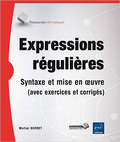Unix |
Unix v6 |
|
 |
a.out(5) |
 |
a.out assembler and link editor output is the output
file of the assembler and the link editor Both programs make
executable if there were no errors and no unresolved
external references. This file has four sections: a header,
the program and data text, a symbol table, and relocation
bits (in that order). The last two may be empty if the
program was loaded with the ‘‘s’’
option of or if the symbols and relocation have been removed
by The header always contains 8 words: 1 A magic number
(407, 410, or 411(8)) 2 The size of the program text segment
3 The size of the initialized portion of the data segment 4
The size of the uninitialized (bss) portion of the data
segment 5 The size of the symbol table 6 The entry location
(always 0 at present) 7 Unused 8 A flag indicating
relocation bits have been suppressed The sizes of each
segment are in bytes but are even. The size of the header is
not included in any of the other sizes. When a file produced
by the assembler or loader is loaded into core for
execution, three logical segments are set up: the text
segment, the data segment (with uninitialized data, which
starts off as all 0, following initialized), and a stack.
The text segment begins at 0 in the core image; the header
is not loaded. If the magic number (word 0) is 407, it
indicates that the text segment is not to be write-protected
and shared, so the data segment is immediately contiguous
with the text segment. If the magic number is 410, the data
segment begins at the first 0 mod 8K byte boundary following
the text segment, and the text segment is not writable by
the program; if other processes are executing the same file,
they will share the text segment. If the magic number is
411, the text segment is again pure, write-protected, and
shared, and moreover instruction and data space are
separated; the text and data segment both begin at location
0. See the 11/45 handbook for restrictions which apply to
this situation. The stack will occupy the highest possible
locations in the core image: from 177776(8) and growing
downwards. The stack is automatically extended as required.
The data segment is only extended as requested by the system
call. The start of the text segment in the file is 20(8);
the start of the data segment is 20+S
t (the size of the text) the
start of the relocation information is 20+S
t +S
d ; the start of the symbol
table is 20+2(S t +S
d ) if the relocation
information is present, 20+S t
+S d if not. The symbol table
consists of 6-word entries. The first four words contain the
ASCII name of the symbol, null-padded. The next word is a
flag indicating the type of symbol. The following values are
possible: 00 undefined symbol 01 absolute symbol 02 text
segment symbol 03 data segment symbol 37 file name symbol
(produced by ld) 04 bss segment symbol 40 undefined external
(.globl) symbol 41 absolute external symbol 42 text segment
external symbol 43 data segment external symbol 44 bss
segment external symbol Values other than those given above
may occur if the user has defined some of his own
instructions. The last word of a symbol table entry contains
the value of the symbol. If the symbol’s type is
undefined external, and the value field is non-zero, the
symbol is interpreted by the loader as the name of a common
region whose size is indicated by the value of the symbol.
The value of a word in the text or data portions which is
not a reference to an undefined external symbol is exactly
that value which will appear in core when the file is
executed. If a word in the text or data portion involves a
reference to an undefined external symbol, as indicated by
the relocation bits for that word, then the value of the
word as stored in the file is an offset from the associated
external symbol. When the file is processed by the link
editor and the external symbol becomes defined, the value of
the symbol will be added into the word in the file. If
relocation information is present, it amounts to one word
per word of program text or initialized data. There is no
relocation information if the ‘‘suppress
relocation’’ flag in the header is on. Bits 3-1
of a relocation word indicate the segment referred to by the
text or data word associated with the relocation word: 00
indicates the reference is absolute 02 indicates the
reference is to the text segment 04 indicates the reference
is to initialized data 06 indicates the reference is to bss
(uninitialized data) 10 indicates the reference is to an
undefined external symbol. Bit 0 of the relocation word
indicates if that the reference is relative to the pc (e.g.
‘‘clr x’’); if that the reference is
to the actual symbol (e.g., ‘‘clr
*$x’’). The remainder of the relocation word
(bits 15-4) contains a symbol number in the case of external
references, and is unused otherwise. The first symbol is
numbered 0, the second 1, etc. as (I), ld (I), strip (I), nm
(I)
 |
a.out(5) |
 |





